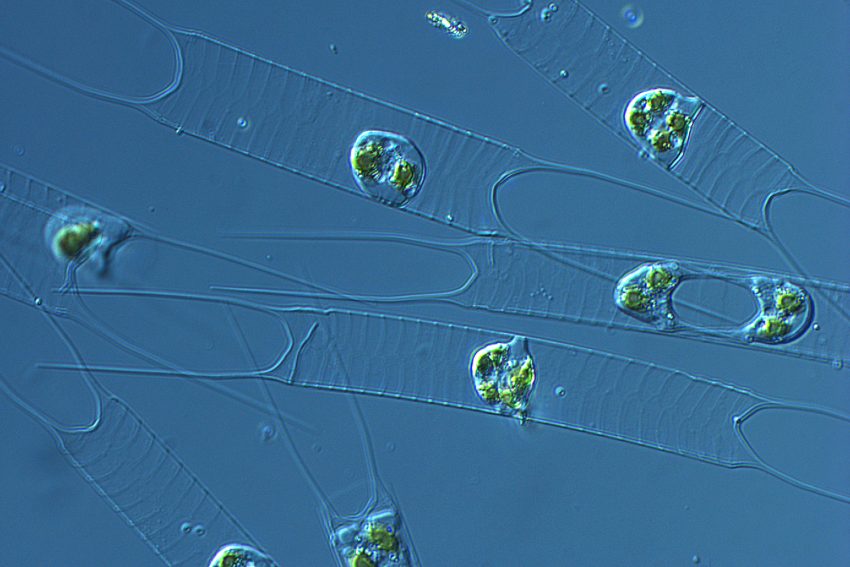Picture of the month: Filigree Diatoms in Braunschweig’s Spielmannsteich Submitted by the Institute of Geosystems and Bioindication
The picture of the month September is a surprise for the scientists of the Institute of Geosystems and Bioindication (IGeo) of Technische Universität Braunschweig: In a recently taken water sample from the Braunschweig Spielmannsteich a mass development, a so-called “flower”, of the diatom Acanthoceras zachariasii can be seen. It was photographed by Dr. Anja Schwarz, a research assistant at IGeo, using a Zeiss research microscope at 400x magnification.

A mass development of the diatom Acanthoceras zachariasii. Picture credits: Anja Schwarz/TU Braunschweig
This diatom species is a locally common form of plankton, especially in eutrophic, i.e. nutrient-rich, waters. The fact that the species lives in plankton, i.e. in open water, can even be observed: Its cell wall is extremely delicate in order to keep its weight as low as possible and thus increase the length of stay in the light-flooded, nutrient-rich zone. Four long floating appendages also ensure that sinking is prevented as far as possible. This is because diatoms do not form flagella that help them counteract the downward drift into darkness. In addition, the floating appendages make them rather unpopular with predators, as they are simply more difficult to eat.
Using ultrasound against cyanobacteria
But what is so surprising about the Acanthoceras flower? The polytrophic – very nutrient-rich – Spielmannsteich, in which the alga was found, has been showing massive cyanobacterial development all year round for many years due to the high nutrient load. This leads to a strong cloudiness of the water and a constant species impoverishment. Since 2013, students have been studying the water regularly as part of internships, supervised by IGeo. The picture is always the same: a cyanobacteria dominance, even in the cool seasons, which is rather untypical for cyanobacteria. In a project in which the IGeo is involved, an attempt has been made since 2018 to use ultrasound to stem the development of cyanobacteria. So far, however, without clearly visible success. In May of this year, the well-known pattern emerged, a cyanobacteria dominance with well over 90 percent share of total phytoplankton.

The diatoms become visible under the microscope: light microscope image at 400x magnification on the ZEISS Axio Imager.M2. Picture credits: Anja Schwarz/TU Braunschweig
Will the diatoms prevail?
For the IGeo researchers, the diatoms are now a first “ray of hope”. But does this also mean: Project successful – all is well? This conclusion would come much too early, says Dr. Anja Schwarz. “It is possible that the cyanobacteria have only briefly proved to be weaker than the diatoms in the competition for resources.” Further sampling should now clarify how sustainable the observed development is and whether the changes in phytoplankton composition, which have already led to a better Secchi depth, indicate a permanent limitation of the cyanobacteria in the Spielmannsteich.
